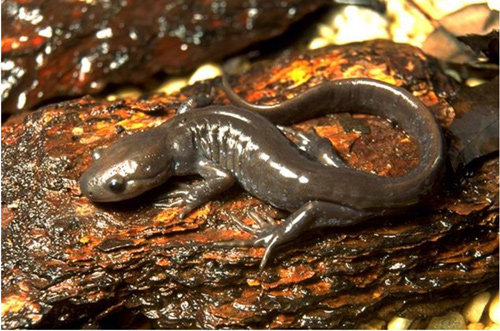The jefferson's salamander is a member of the mole salamander family, so named because the members of this family spend most of their lives underground. Jefferson's salamanders are smooth-skinned and dark gray or brown with blue speckling or flecks. They can be up to 6 inches long.
The jefferson's salamander interbreeds frequently with another Connecticut salamander species, the blue-spotted salamander. These two species have so thoroughly interbred that there are almost no pure populations of either found here. It is very difficult to tell one from the other and from hybrids without genetic tests.
The range of jefferson's salamanders is from western New England and southern New York to Virginia southwards and Indiana westwards. Jefferson's salamander hybrids are found throughout Connecticut. Pure jefferson's salamanders are not found in Connecticut east of the Connecticut river. They are rare but less rare than the blue-spotted salamanders with which they often interbreed. The many hybrids of blue-spotted and jefferson's salamanders are considered species of Special Concern in Connecticut.
Adult jefferson's salamanders spend most of their lives in burrows under leaf litter, rocks or rotting logs. They prefer undisturbed deciduous forests with rocky slopes. They hibernate over the winter in burrows or under logs.
Mating season occurs in March to April. Males and females emerge from their burrows and head to water to mate. Jefferson's salamanders most often use temporary vernal pools which are safer for eggs and young as they are fish-free. During breeding males deposit packets of sperm in the water. Females pick up these packets through their cloaca, the opening amphibians use for breeding, egg-laying and waste. Fertilization of her eggs takes place internally. The female will lay eggs in multiple cylindrical clumps of about 15-30 eggs each on vegetation submerged in the vernal pool. They hatch into larvae in 30 to 45 days.
The larval stage for these salamanders is aquatic and they have gills. They live in the water while they develop into adults and have usually metamorphosized into the adult stage by late summer when the adults leave the water and begin their terrestial life of burrowing.
Adult jefferson's salamanders eat insects and invertebrates, as do their larvae.
